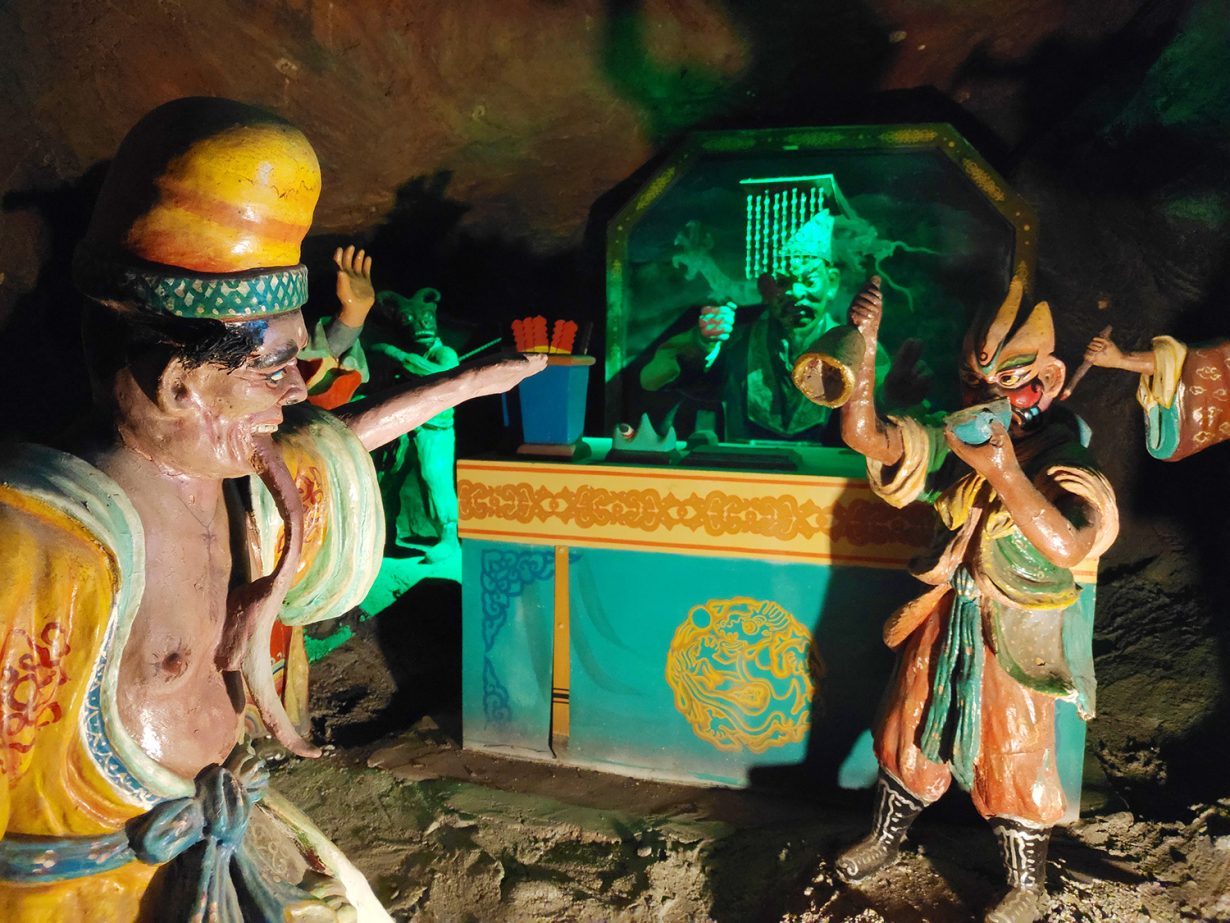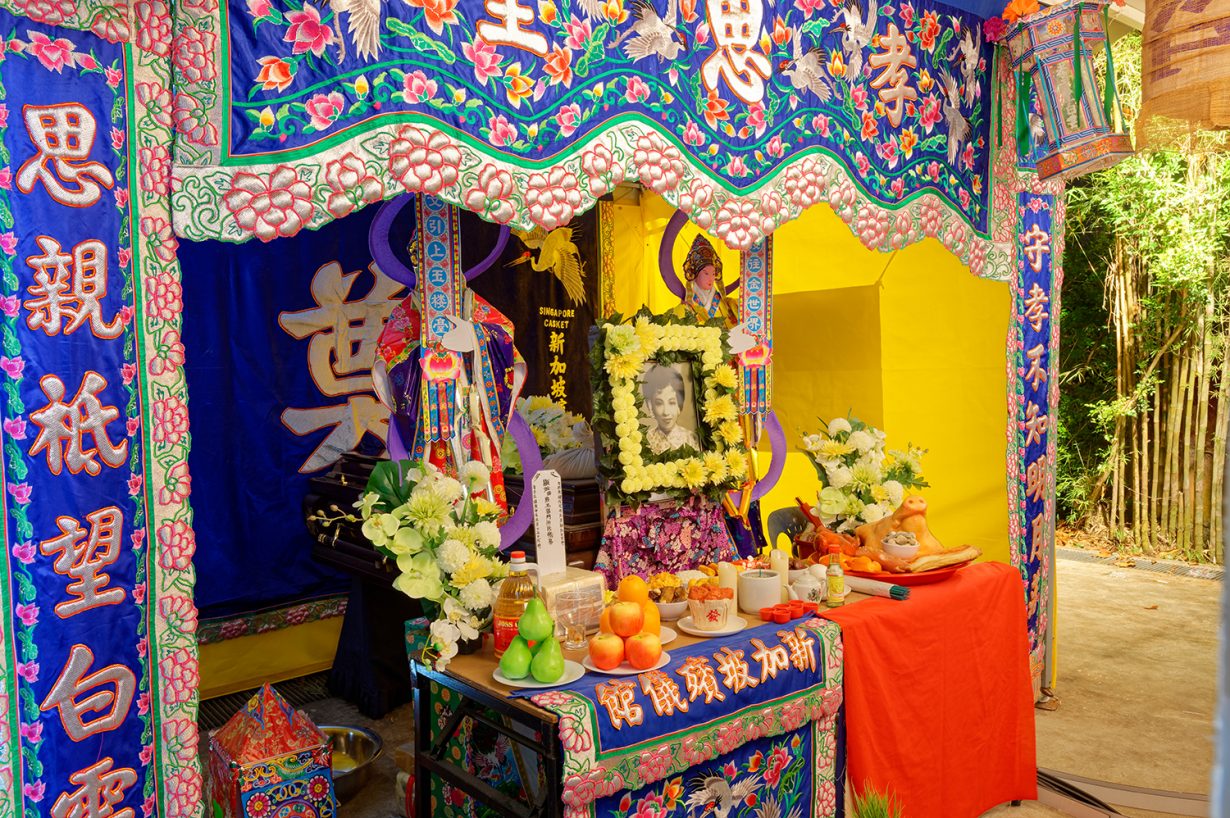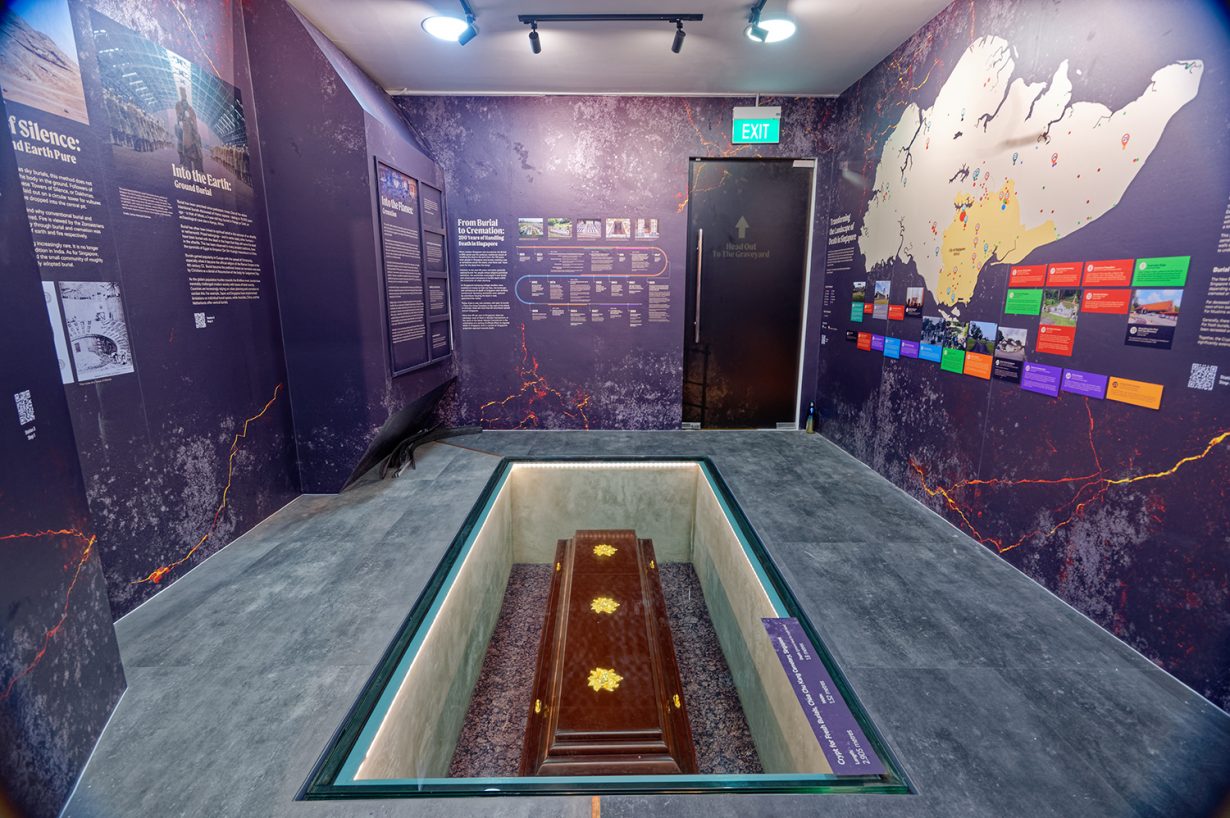Singapore’s Haw Par Villa recently reopened its hellish gates after undergoing refurbishment – Adeline Chia finds out what her punishment will be

A mainstay on many ‘weirdest themeparks of the world’ lists, Singapore’s Haw Par Villa is a sculpture park filled with hundreds of statues and dioramas depicting scenes from Chinese legends and teachings from Taoism, Buddhism and Confucianism. Its most famous feature is the ‘Ten Courts of Hell’: scenes showing how sinners are punished in the underworld. After final judgement, sinners are impaled on stakes, sawn in half, mashed into a mortar by a huge pestle and so on. These hellscapes are only a sampling of the WTF-ery in this place, which is pretty much a nonstop experience, from passing the streaky-bacon-coloured rocky landscaping at the entrance, to pondering the animal–human hybridity at the ‘Pond of Legacy’ at the top of the hill, where there are mercrabs, merclams, mersnails and mermaids. The mermaids are meant to be sexy (I think), with their nippleless boobs exposed. The adults recline on their fronts or backs, their arms outstretched. Two babies are doing a kind of circus balancing act, one stacked above the other. All their faces are terrified and blank.
Haw Par Villa was built in 1937 on the grounds of a private villa owned by Aw Boon Haw, one of the founders of the Tiger Balm pain relief ointment. The Rangoon born tycoon commissioned statues in the garden and opened the park to the public during the 1950s to promote Chinese values, which in this case turned out to be a particularly histrionic strain of Confucianism.

The dioramas have titles like ‘The Grateful Tortoise’, ‘Helping Future Generations’ and ‘Thriftiness and Wealth’. To illustrate filial piety, there is a tableau of a daughter breastfeeding her mother-in-law, adapted from a Tang dynasty story. Another scene shows a Jin dynasty character who stripped down to melt the ice from a frozen lake using his body heat in order to catch fish for a stepmother ‘who unceasingly spoke ill of him’.
Subsequently, under different managements, other types of statues were added, which explains the park’s chaotic quality. There are elaborate dioramas of folktales about the Eight Immortals, but also animal menageries and ‘international’ features such as sumo wrestlers and Thai court dancers. In short, this place is completely bonkers. And a true original. So naturally the Singapore government doesn’t know what to do with it. After it acquired the place in 1985 via the Land Acquisition Act, it tried to commercialise the park. During the 1990s, an operator was hired to Disneyfy it into Haw Par Villa Dragon World, described as ‘the only Chinese mythological theme park in the world’, complete with new thrill rides. It didn’t work out. After that, entry fees that had been imposed were scrapped and the rides removed. Another operator decided to go down the intellectual route, setting up a Hua Song Museum, about the Chinese diaspora. That closed in 2012. Since then, there were no ambitions to boost the park’s popularity until 2015, when heritage consultancy Journeys was hired to run the place. In October it opened Hell’s Museum, dedicated to exploring the afterlife in different religions. The museum is strategically placed just before the ‘Ten Courts of Hell’ feature, so you have to pay an admission fee of S$15 to enter the museum and see the hellscape, which has been air-conditioned. The rest of the park remains free.

Hell’s Museum explores the different concepts of the afterlife, as well the rituals surrounding it. There are some showy exhibits, such as a coffin in a burial pit dug to the dimensions of a local cemetery plot, and a mockup of a Hokkien funeral arrangement, complete with candles and food offerings. But most of it is World Religion 101, with a focus on local Taoist beliefs and practices. Occasionally the writing that accompanies the displays veers into grandiose nonsense: the wall text before a selection of verses about death from sacred texts reads, ‘To an unborn child, the mother’s womb is the entire universe. That is Mankind with regards to the afterlife – no one truly knows what happens after one has taken the final breath.’

To be fair, as far as novelty museums go, Hell’s Museum is a decent one. Which is the problem. Its aspirations towards objectivity and sensible exposition exist on a different philosophical plane to Haw Par Villa’s operatic absurdity. Still, Hell’s Museum is downright scintillating compared to what is slated for 2022: the Rise of Asia Museum, which ‘aims to explain Asian entrepreneurship and the modern rise of Asia’. Which is, first, yawn, and second, rather disturbing, given that the museum chooses one of Haw Par Villa’s most problematic aspects – unironic Asian chauvinism – and provides a twenty-first-century update couched purely in economic and political terms. There are other moral ambiguities in the park, of course. Styled as free edutainment for the masses, it is also a grand monument to narcissism (many phallic pillars dedicated to the men in the Aw family) and brand promotion (little cartoon animals holding Tiger Balm jars). But despite its contradictions, Haw Par Villa retains its own stubborn integrity. It refuses to succeed on anything but its own terms, resisting attempts at commercialisation and legitimisation.
Will the new museums boost Haw Par Villa’s flagging appeal? It remains to be seen. I’m just glad the interventions have been minimal, and we’re not getting some Dragon World Part II in a fully air-conditioned dome. My ultimate fantasy, of course, is for the park to be left alone. Let it while away its days in dowagerlike decline, losing money, taking up space, screwing up urban masterplans and grand tourism strategies, receiving few but determined travellers who have come to pay their sincere respects.
From the January & February issue of ArtReview